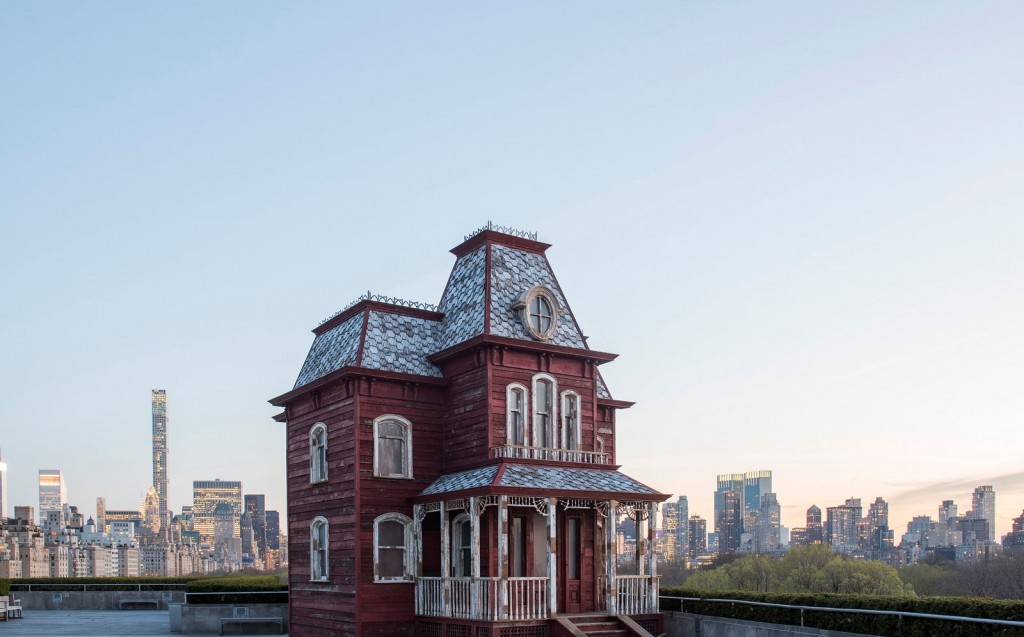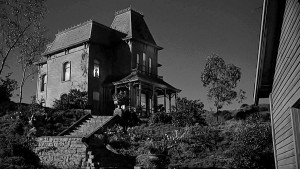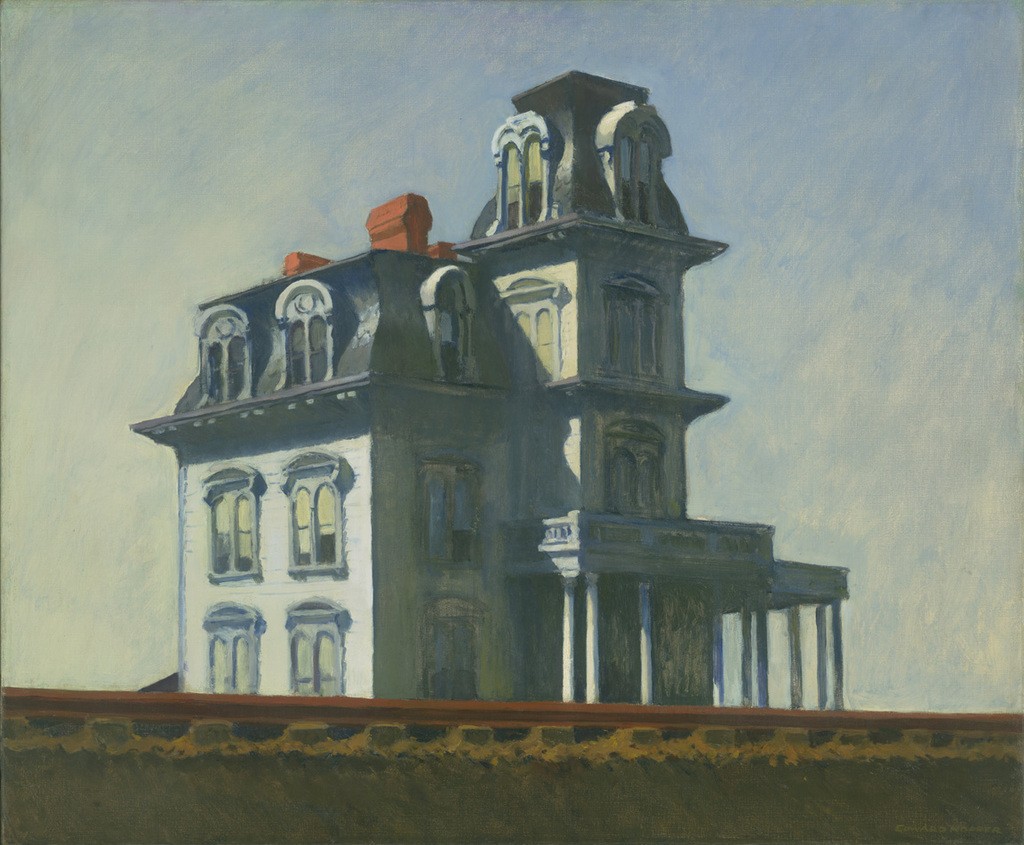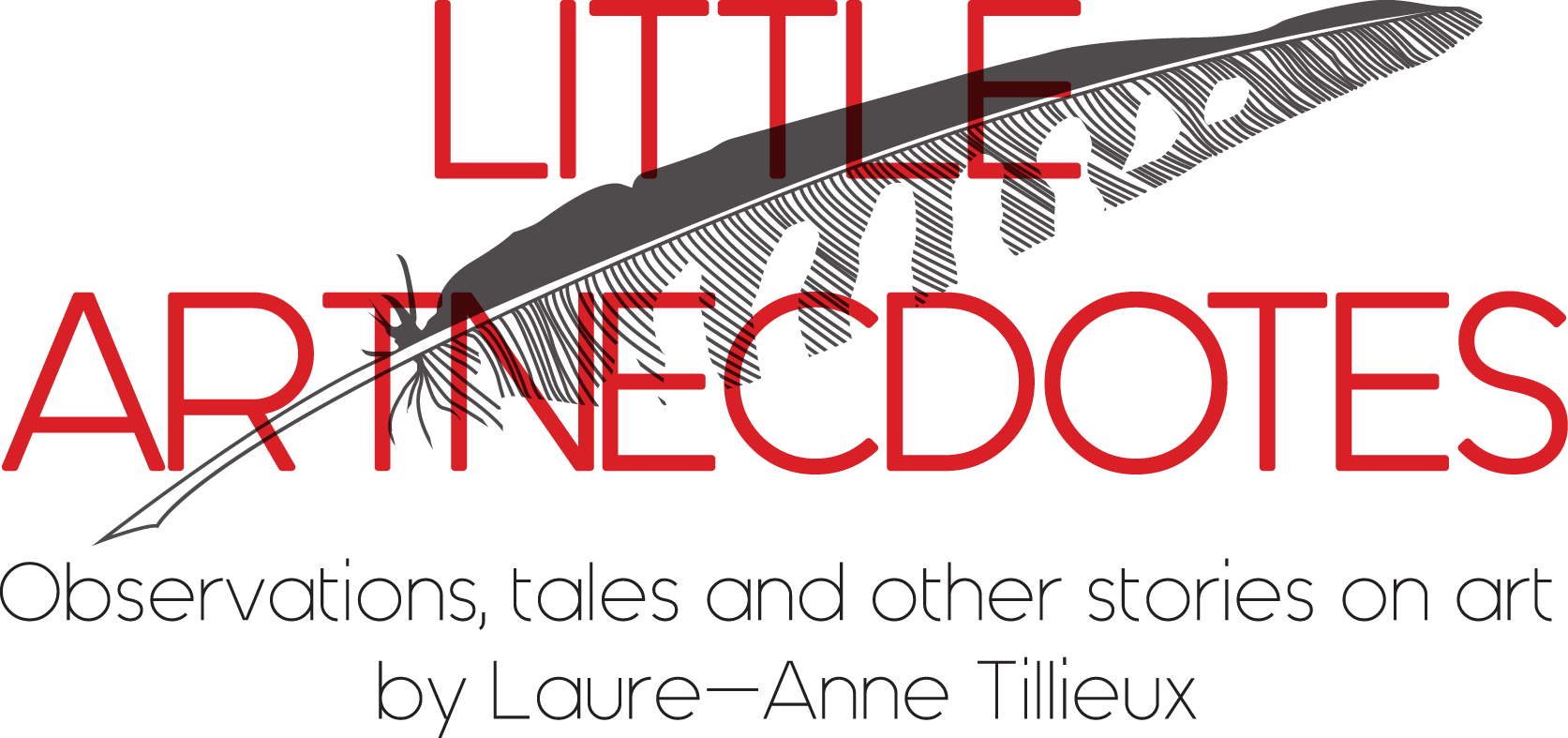
Resurrection of the ‘Psycho’ house
A late Victorian house emerges on a rooftop, framed by views of midtown skyscrapers, Central Park and Fifth Avenue apartment buildings in today’s hypermodern skyline of New York. A ghostly and strange appearance amid this architectural violence. The Metropolitan Museum shows since mid-April its newest commission for the Roof Garden, a work by English artist Cornelia Parker (b. 1956), titled Transitional Object (PsychoBarn). What appears to be a wooden house on first sight is revealed to be a propped-up façade that is kept at its place by scaffolds and weights. The link with cinema seems not far-fetched at all.
The house is a smaller replica of the haunted house from Alfred Hitchock’s thriller Psycho (1960), that was a small-scale version, in turn, of the Victorian villa painted by Edward Hopper in House by the railroad (1925). Made from the remains of a red farmer’s barn common on the American countryside, the link with the era of the olden times was an obvious aim for the artist. The Dutch red barn is part of the iconography of America. The installation of Parker opens up the dialogue between urban and rural, old and new, artifice and nature, in a constantly changing metropolis where the nostalgic ramshackle gives way to mostly soulless skyscrapers of steel and glass.
It also evokes the legacy of New York City rooftops covered by water towers, mechanical sheds, gardens and penthouses.
A reference to Psycho, the psychopathic nature of Norman Bates and psychoanalysis continues in the title of the work. Transitional Object is a term introduced by the British psychoanalyst Donald Winnicott for objects as a teddy bear, a pacifier or blanket to which toddlers attach themselves when they become independent from their mothers.
After the commissions of respectively Imran Qureshi (2013), Dan Graham with Günther Vogt (2014) and Pierre Huyghe (2015), the red wooden ‘Psycho’ house forms the uncanny and dilapidated presence in Manhattan’s chic neighbourhood till the end of October. No Norman Bates is needed for this visit on top of the Met.

Bates Motel in Alfred Hitchock’s Psycho 1960

Edward Hopper House by the railroad 1925. Courtesy Museum of Modern Art New York
